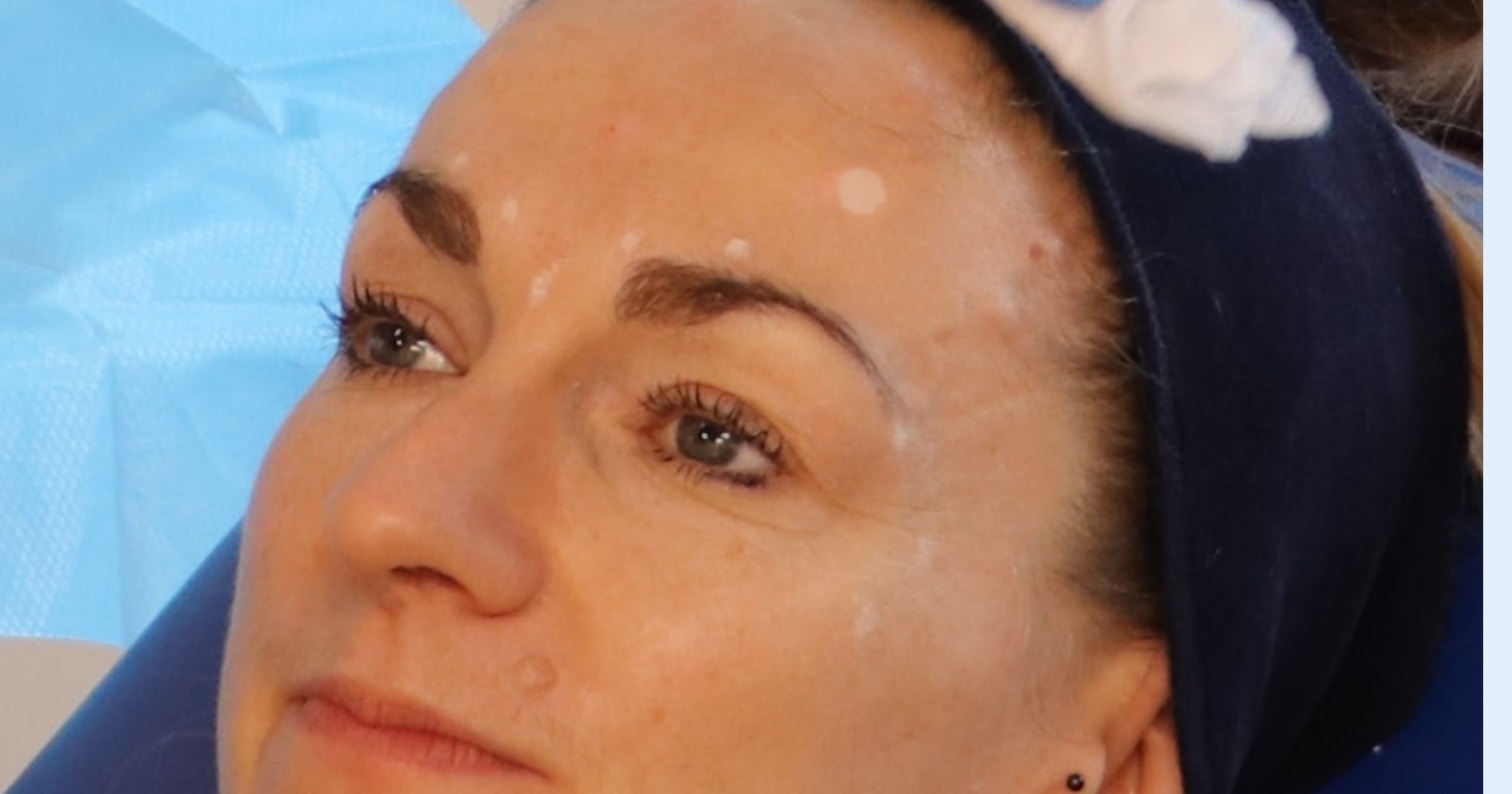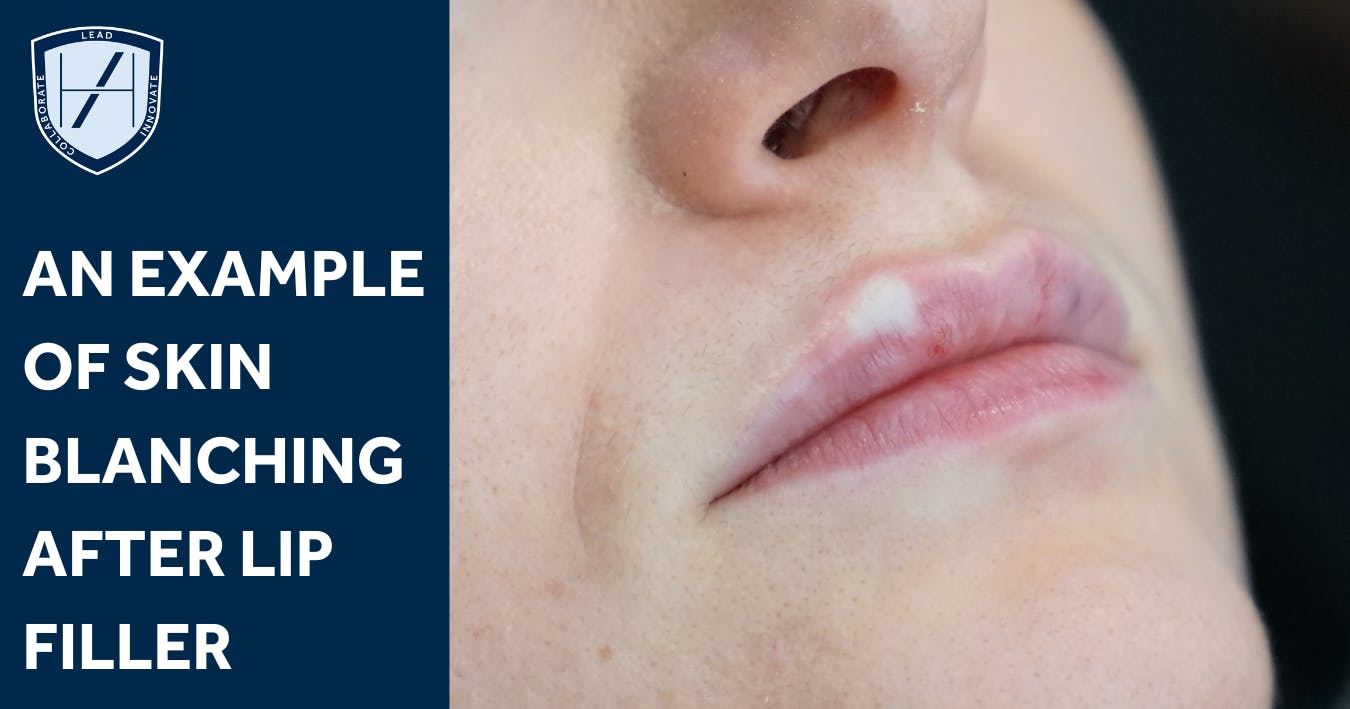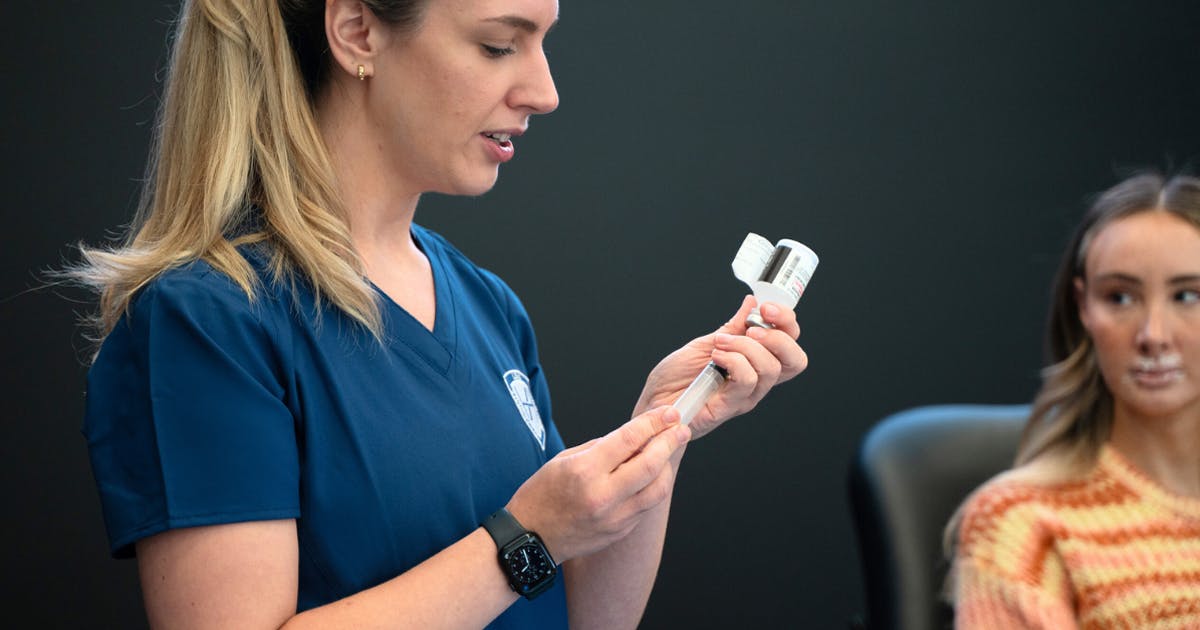Blanching After Botox: Why It Can Happen and How to Manage It

Skin blanching after botox injections can occur, especially with novice injectors. However, it’s a less serious event than when it occurs following dermal fillers.
To find out why it happens, how to identify it and what it can signify, we spoke to Dr Janine Rothburn. As a Harley Academy clinical trainer and aesthetic medicine specialist, she provided insights every injector should know.
She also explains what to do if your patient presents with blanching after toxin injections.
You may want to visit the Harley Academy Instagram page to save our post on this so you have a handy reminder.

What causes skin blanching after botox?
Blanching following injections is usually the result of vasoconstriction. As flow of blood to the vessels is constricted, the localised skin turns pale or white. This presentation is known as blanching or skin blanching. Interestingly, botox is sometimes even used to treat flushed, vasodilated skin.
“Blanching after botox often means the injection has been placed too superficially,” advises Dr Janine. “Apart from the visual presentation, this may be quite uncomfortable for the patient, too.
“If you inject too superficially in an area where the injection should have been deeper, the toxin may or may not diffuse into the target muscle.” A common area where the skin blanches as a result is the forehead.
Skin blanching is often fairly transient, resolving without intervention within a short period following injection. This can typically be minutes in duration.
Skin blanching can be prevented with small tweaks in technique. This should develop as newer aesthetic practitioners becomes more adept in predicting dermal thickness and where the product needs to be placed.
This is something all Harley Academy trainees are taught about during their entry-level aesthetics training with us. Whether you opt for our Foundation Training in Botox & Dermal Fillers - on its own or as part of the Level 7 Diploma in injectables - or The Aesthetics Accelerator, you’ll learn about this basic concern.
What does it mean if your patient experiences blanching at the injection sites?
Dr Janine states, “Blanching to the skin following toxin injections will not cause any significant harm, unlike blanching after dermal fillers.”
“It can indicate that a top-up dose may be required at your patient’s review appointment.” This is because the target muscle may only be partially treated.
Is blanching after botox a common problem?
As it’s generally something that self-resolves within a short period of time, blanching is rarely reported. As such, it’s hard to say just how common or rare this concern is. However, it’s generally regarded as being somewhat rare.
It’s simply something you need to be aware of as a medical aesthetics practitioner, so you can provide the best possible service to your patients. This includes reassuring them where necessary.
It’s worth noting that blanching after neurotoxin injections is not considered to be a ‘complication’, as such.
How do you identify blanching following toxin injections?
The skin around the injection site(s) will generally turn much paler than your patient’s normal skin tone. Often the skin turns completely white, especially in Caucasian patients.
You may also notice changes in skin tautness and small blood vessels becoming more noticeable in the region.
How does blanching present in patients with skin of colour?
Blanching can be more challenging to identify in patients with skin of colour. This is where your ‘before’ photos can come in useful.
You should check your patients for the following:
- Changes in colour compared to pre-treatment
- Difference in skin texture - the skin may appear more taut or ‘stretched’.
Also, ask your patient if they feel any tingling or numbness in the relevant area(s). These sensations can indicate that blanching may be present.
The importance of taking good ‘Before & After’ photos of your patients
This type of scenario highlights a key reason for always taking good, clear before and after photos.
In addition to being a medicolegal requirement, the ability to compare these images allows you to properly assess situations.
We have previously produced a guide to Clinical Photography for Aesthetics Practitioners. This details best practices for taking patient photos before and after treatment.
It includes information on:
- The best ways to standardise your photography
- How to ensure you get consistent angles each time
- Setting up your lighting for clear images
- Why it’s better to use a camera than mobile phones or iPads
- Ways to incorporate photography setups into your clinical space.

What to do if your patient displays blanching after botox
Dr Janine counsels, “Blanching after toxin injection will be self-limiting - do not worry!”
She says to “review the patient at 2-4 weeks and, if an adjustment dose is required, you can add more toxin then.”
An important element to remember here is to be transparent with your patient about what is happening.
Make sure they know exactly what’s going on and why. Provide details of how you intend to manage this, if needed.
Reassure them and take the time to put their minds at rest. There are four main reasons why it’s better to be up front about what you’re seeing and what they should expect.
- It will hopefully comfort them and help them to understand that this is not something to be concerned about
- By doing this you can avoid panicked communications after your patient goes home and consults the ever-reliable Dr Google…!
- If they develop any other symptoms or have further concerns, they know what to expect and to contact you if anything outside of this occurs
- It builds their trust and confidence in you as a practitioner.
The important difference between blanching after botox and filler injections
Dr Janine confirms, “Thankfully, blanching of the injection site after toxin is nothing to be concerned about.
“However, blanching after dermal fillers is more serious and could indicate a vascular event - such as a vascular occlusion - which will need to be managed immediately.”
You can find out more about managing a vascular event following filler injections in our article, Bruising or Vascular Occlusion? How to Tell the Difference.
The 7 key takeaways for identifying and managing blanching after botox
- Don’t panic - this is not a serious or urgent complication and should not be confused with blanching that occurs after filler treatments which is an immediate issue
- It will often resolve on its own without intervention within minutes
- Blanched skin will appear pale or white; for patients with skin of colour, also check for differences in skin texture, vascular changes and feelings of tingling or numbness
- Use your ‘before’ photos so you can make an informed comparison
- Blanching can occur if your toxin injections were too superficial
- Explain what is happening to your patient and let them know what to expect
- Book your patient in for a review appointment at 2-4 weeks and provide an adjustment dose then, if required, to correct this issue.

Improve your aesthetics complications management confidence
Complications prevention and management for botox and filler treatments are covered during our Level 7 Diploma in Botox & Dermal Filler courses.
During your one-to-one mentoring sessions, you also have valuable opportunities to discuss any queries with your dedicated trainer. As currently practising aesthetics specialists outside of their work at Harley Academy, they’ll happily share their real-world insights and expertise.
We currently offer a detailed online course entitled Preventing & Managing Dermal Filler Complications. This eLearning can help to boost your confidence in complications management and serve as a useful resource.
It’s available as a standalone option, which can be purchased online. This is also provided free of charge to trainees taking our Level 7 courses. This includes the traditional Level 7 Diploma, Combined Level 7 and Fast Track Level 7 courses.
A further companion course on Managing Aesthetics Complications is also in development. This will cover topics such as nodules and delayed onset reactions and you can sign up for news on this via our New Aesthetics Courses Coming Soon page.
However, as always, if you have any queries regarding finding the best aesthetics course for you, our Course Advisors are always on hand to help. Simply book a call for an advisory chat at your convenience or send them a message via the chatbot in the bottom right corner of this screen.
All information correct at the time of publication
Download our full prospectus
Browse all our injectables, dermal fillers and cosmetic dermatology courses in one document
By submitting this form, you agree to receive marketing about our products, events, promotions and exclusive content. Consent is not a condition of purchase, and no purchase is necessary. Message frequency varies. View our Privacy Policy and Terms & Conditions
Attend our FREE open evening
If you're not sure which course is right for you, let us help
Join us online or in-person at our free open evening to learn more
Our Partners














STAY INFORMED
Sign up to receive industry news, careers advice, special offers and information on Harley Academy courses and services


